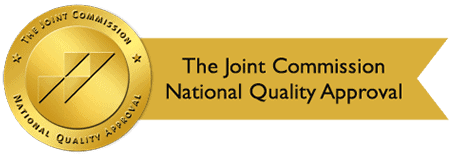By: Design for Change Recovery
Categories:
Things to Consider Before Choosing a Drug Rehab Facility
You are here:Making the decision to enter an addiction treatment program is the most difficult first step in recovery. Now that you’ve decided to get professional help, choosing a drug rehab facility that is right for your needs can be confusing.
Each drug rehab facility follows the same basic protocols, but the treatment options vary. Before making a decision, you need to know what to consider and what to expect.
You can use these guidelines to find the right treatment center according to your needs and preferences.
Staff Credentials and Facility Accreditations
The most important consideration when choosing a drug rehab facility is to know about its accreditation and staff credentials.
An accredited facility has been scrutinized and found to meet the high standards for drug treatment protocols by the Joint Commission International Organization (JCI). The facilities are evaluated regularly to ensure that they continue to uphold the stringent best practices in patient care and safety.
Staff credentials are also something to consider when evaluating drug treatment programs. The facility should employ certified addiction coaches (CACs) and certified clinical coexisting disorder professionals (CCDPs). A staff that has a mix of experience and credentials will be able to understand addiction from every perspective and use their skills and knowledge effectively and compassionately.
Outpatient vs. Inpatient Drug Rehab Facility
Several factors determine whether you should choose inpatient or outpatient treatment. Some facilities offer both, while others specialize in one or the other. Choosing the right type of program will be influenced by your situation regarding employment, school, family commitments, and financial considerations. It is also important to consider the severity of your addiction.
Here are some of the main differences between inpatient and outpatient programs:
- Inpatient rehab – With inpatient programs, you’ll remain in a controlled environment 24/7. You will need to arrange for time away from school or work and find childcare if needed for your young children. During inpatient treatment, you will undergo group and individual counseling, wellness programs and activities, and relapse prevention sessions. You’ll also have free time to engage in games, art, music, exercise, and meditation and can enjoy interaction with other patients.
Inpatient rehab is recommended for people with co-occurring disorders such as addictions and mental or physical disorders. It is also the preferred treatment approach for individuals with severe substance use issues and limited support systems.
- Outpatient rehab – An outpatient program is more flexible because you do not have to reside at the facility. You’ll continue living at home, working, attending school, and socializing. Most outpatient programs require you to attend regularly scheduled counseling and therapy sessions that are flexible enough to accommodate your lifestyle. Outpatient care is lower in cost than inpatient programs.
The main disadvantage of outpatient treatment is that it’s up to you to attend sessions and maintain sobriety on your own. Also, some outpatient facilities may not be able to administer medications.
Your Guide for Choosing a Drug Rehab Facility
A counselor or physician may be able to recommend the treatment program they feel is best for you. However, if you prefer to make the decision on your own, here are some things you should consider:
- Know your goals – Of course, your main goal is to stop using. But, what else would you like to accomplish? Go back to school or reconnect with friends or family? Think of a few goals that you want to achieve and this will help you stay motivated.
- Consider the location – Do you want to be close to home, or would you prefer to put some distance between yourself and the environment that fueled your substance use?
- Plan to stay the right amount of time – Most programs last from 30 to 90 days. In some cases, treatment can last for a year or more. Remember, leaving rehab too soon can cause setbacks that result in relapse.
- Look for multifaceted treatment options – Each person responds to treatment differently, so you should seek a program that aligns with your needs and preferences. For instance, does the facility offer medication-assisted therapy, holistic treatment plans, secular or non-secular programs, or programs based on sexual orientation, gender, or other considerations.
- Make sure you have an aftercare plan – You want a rehab program that will help you create an aftercare plan. Family support during and after rehab is crucial to successful recovery. If you don’t have a strong support system, other support groups can help you stay on track. You may want to enter a sober living facility after rehab if your home environment is not supportive.
Many treatment facilities work with insurance companies to provide affordable treatment. Contact a facility’s intake advisor if you don’t have insurance to find out if financial arrangements are available.
Why Design for Change Recovery Is the Right Choice for You
Our mission at Design for Change Recovery is to help clients recover from substance misuse or inappropriate use disorders. Our fully-accredited, multifaceted program is designed to accommodate the unique needs of each client.
As a JCAHO-accredited facility, we provide high-quality care administered by skilled, credentialled staff. Our Lancaster, CA facility provides access to certified physicians and other medical professionals throughout detox and rehabilitation.
If you are in the process of choosing a drug rehab facility, contact us today. One of our representatives will be happy to tell you more about our programs.
For more information:
- jointcommission.org/ – The Joint Commission: Who We Are


